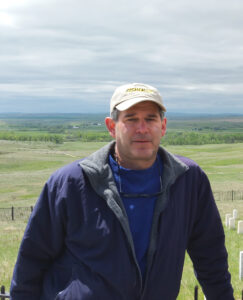Joel Bohy
 Joel Bohy has had an enduring passion for the material culture related to military history. Growing up in Concord, Massachusetts, Joel began collecting at an early age and developed a passion for the arms, equipage, and uniforms of the common soldier from the American Revolutionary War through World War II. He is an active member of the American Society of Arms Collectors and an instructor for Advanced Metal Detecting for the Archeologist. His passion for militaria has led him to write and lecture with the Society For Historical Archaeology, Fields of Conflict archaeology conference, Colonial Williamsburg, “Weapons of War” conference, Concord Museum, and Minuteman National Historical Park. He co-authored, The Arms of Lexington and Concord in The American Rifleman Magazine, Colonial Era Firearm Bullet Performance: A Live Fire Experimental Study for Archaeological Interpretation and Firearm Bullet Performance: Phase II, Live Fire Experimental Study for Archaeological Interpretation Colonial Pistol, Colonial Fowler, Colonial Rifle, and a Civil War Rifled Musket.
Joel Bohy has had an enduring passion for the material culture related to military history. Growing up in Concord, Massachusetts, Joel began collecting at an early age and developed a passion for the arms, equipage, and uniforms of the common soldier from the American Revolutionary War through World War II. He is an active member of the American Society of Arms Collectors and an instructor for Advanced Metal Detecting for the Archeologist. His passion for militaria has led him to write and lecture with the Society For Historical Archaeology, Fields of Conflict archaeology conference, Colonial Williamsburg, “Weapons of War” conference, Concord Museum, and Minuteman National Historical Park. He co-authored, The Arms of Lexington and Concord in The American Rifleman Magazine, Colonial Era Firearm Bullet Performance: A Live Fire Experimental Study for Archaeological Interpretation and Firearm Bullet Performance: Phase II, Live Fire Experimental Study for Archaeological Interpretation Colonial Pistol, Colonial Fowler, Colonial Rifle, and a Civil War Rifled Musket.
“And they all have a story to tell…” is what authors Joel Bohy and Douglas Scott note as their motivation for the years of forensic research on the surviving bullet holes and bullet-struck artifacts from the Battles of Lexington and Concord, which ignited the Revolutionary War. The culmination of this research is the newly released Bullet Strikes From the First Day of the American Revolution, which uses engaging imagery, first-person accounts from the battles, and the historical and archaeological expertise of the authors to illustrate the stories these witness objects can tell and the empathy they can inspire for the events of April 19, 1775.

Bohy and Scott conducted rigorous scientific experiments, firing custom-built reproduction colonial and British firearms from the Revolutionary War, generating data that allowed them to reconstruct troop positions and movements all along “Battle Road.” This is what leads to the insightful interpretation of surviving bullet-struck objects and architectural elements from the battles outlined in Bullet Strikes From the First Day of the American Revolution, and helps readers understand why these events happened the way they did. Bohy and Scott give detailed explanations about surviving architecture and artifacts – including the Elisha Jones House, the Jason Russell House, the Buckman and Munroe Taverns, and James Hayward’s powder horn – and the people who slept within their walls or carried these objects in battles that raged just outside their doorsteps.
For Inquiries or to hire Joel, contact jlane@revolution250.org
